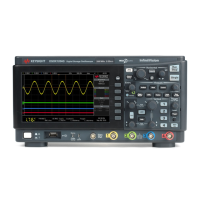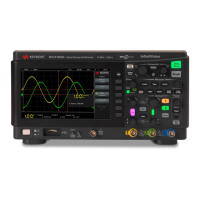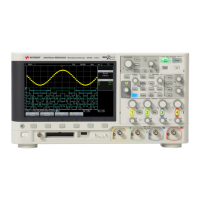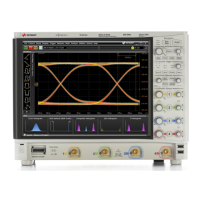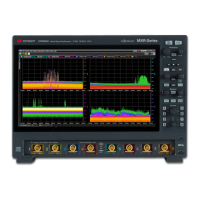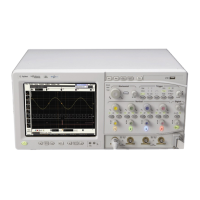90 Keysight InfiniiVision HD3-Series Oscilloscopes User's Guide
5 Math Waveforms
You can use the X1 and X2 markers to measure frequency values and difference
between two frequency values (∆X). Use the Y1 and Y2 markers to measure
amplitude in dB and difference in amplitude (∆Y).
You can make peak-to-peak, maximum, minimum, and average dB measurements
on the FFT waveform. You can also find the frequency value at the first occurrence
of the waveform maximum by using the X at Max Y measurement.
See Also •
"Searching for FFT Peaks" on page 70
• "FFT Measurement Hints" on page 71
• "FFT Units" on page 72
• "FFT DC Value" on page 72
• "FFT Aliasing" on page 72
• "FFT Spectral Leakage" on page 73
• "Units for Math Waveforms" on page 78
Filters Math Functions
You can use math filters to create a waveform that is the result of a the filter on an
analog input channel or on the result of an arithmetic operation.
• "Averaged Value" on page 90
• "Band Pass Filter" on page 91
• "Envelope" on page 91
• "High Pass and Low Pass Filter" on page 92
• "Smoothing" on page 92
Averaged Value
When the Averaged Value operator is selected, the math waveform becomes the
selected source waveform, averaged the selected number of times.
Scale and offset considerations
If you do not manually change the FFT scale or offset settings, when you turn the horizontal
scale knob, the span and center frequency settings will automatically change to allow
optimum viewing of the full spectrum.
If you do manually set scale or offset, turning the horizontal scale knob will not change the
span or center frequency settings, allowing you see better detail around a specific frequency.
Selecting the FFT Auto Setup button will automatically rescale the waveform and span and
center will again automatically track the horizontal scale setting.
